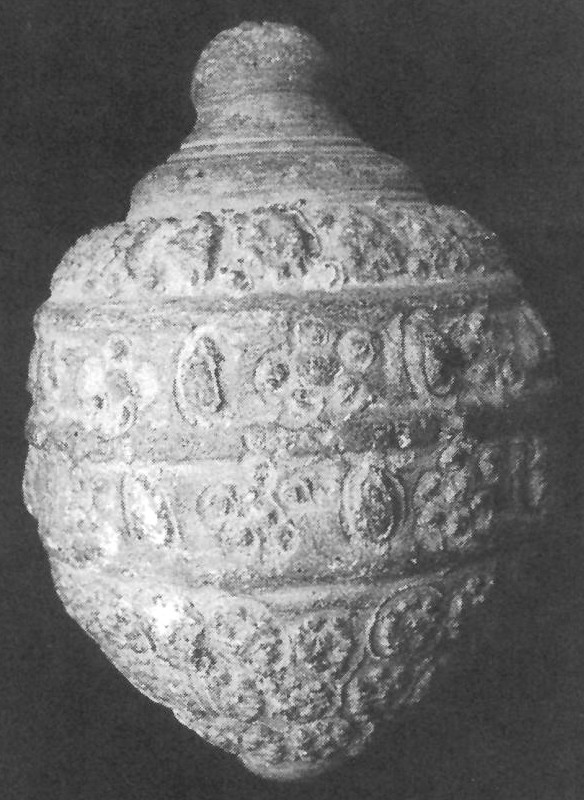The traditional beers in the medieval Muslim world
It's no secret that ancient Egypt and Mesopotamia were two of the cradles of beer in ancient times.
These millennia-old brewing traditions would have retreated in the face of the wine drinking culture imported by Alexander the Great's Greeks, then the Roman legions and finally the spread of Christianity. They are said to have disappeared once and for all with Islam, which banned beer, wine, mead and all fermented beverages known in the 7th century. Yet Persian poetry tells us that wine was drunk in the Baghdad caliphate and throughout the Near East several centuries after the establishment of Islam.
So, did its cousin, the beer, still exist in Baghdad, Damascus or Cairo in the 10th or 15th century?
Written documents, iconography and archaeology are full of fascinating surprises.
These ones foam and sparkle!
In fact, beer has been legally produced, sold and consumed, especially in Egypt, from the High Middle Ages to the present day. It has enjoyed great popularity. Little is known about the history of beer in these countries, but numerous historical sources shed light on its social and technical features. Medieval cookery books, for example, reveal over a hundred recipes for beer, using ingredients such as barley, rice, wheat, dried yeast, spices and aromatic plants. Several brewing techniques are employed: barley malting, sour mediums made with fruits and otherwise acetic or lactic fermentations.
We are talking about beer, a fermented beverage obtained by saccharifying starch, and not wine, even if recipes add fruit or sugars to flavor the drink or temper its sourness. The use of barley malt leaves no doubt as to the nature of these beverages. As for alcoholic fermentation, this is partially completed after 2 days. And a minor detail: no hops are used, but rather herbs that act as preservatives, as in the cervoise of the early European Middle Ages.
We know all these technical details thanks to the recipe books compiled for the caliphs, governors and notables of the Muslim world. The oldest was written in Baghdad in the 10th century, the most recent in Cairo in the 14th century. Between these two dates, other cookery books describe beer recipes in their chapter dedicated to beverages. To date, a hundred different recipes have been identified. Some differ only by a single flavoring, others by a very singular brewing process. These beers bear names that distinguish them from wines and other fermented beverages: fuqqa', mizr, aqsīmā, sūbiya, Yemen shush.
An example of a recipe for brewing māʾ al-shaʿīr (malted barley drink) for the month of Ramadan.
Take picked over barley, soak it in water overnight and drain it early the following morning. Spread the grains on a quffa (large basket of woven date-palm fronds), weigh them down, and wait until they sprout. Dry them in the sun, and finely grind them into flour. [malting of barley]
Next, take ½ qadaḥ (approx. 1 pound) of this flour, as well as ¼ qadaḥ wheat flour (daqīq qamḥ). Put them in an earthenware tub (mājūr), and boil water in a large pot. Pour a little of it into the mājūr and stir with a ladle. Next, add enough [of the hot water] to cover it, and set it aside for the rest of the day and overnight, so that it sours. Early in the morning, add more cold water to fill the mājūr, and set aside for two more days.
On the third day [Nasrallah s’appuie sur cette indication pour avancer que la fermentation ne doit pas dépasser 3 jours pour rester conforme à l’islam], add to it leaves of citron (turunj) and sour orange (nāranj), as well as those of rue and mint. Cut 10 lemons in half and add them to the mājūr. Add just enough salt to give it a pleasant taste.
In the evening (ʻashāʻ), take the amount you want to serve [from the mājūr] strain it, squeeze some lemon juice on it, add sugar, musk, and rosewater to it, and it will be ready to drink.
(after Nasrallah Nawal (2018), Treasure Trove of Benefits and Variety at the Table, recipe 411, p. 278. Trad. Véronique Pitchon)
Between the 10th and 14th centuries, iconography depicts tavern scenes and drinking parties organized by highly selective groups of wealthy, edonistic drinkers. Did they drink wine, beer or both? Depictions of certain containers sometimes help to clarify this issue. Beer is sold and carried in sphero-conical jugs of a few liters in size, with narrow necks and leather caps, known as turanji or kuza-yi fuqqa'a, depending on the region and language. These highly distinctive beer jugs have been found from pre-Mongol Iran and Persia to the Arab-Muslim world on the shores of the Mediterranean. They bear inscriptions that leave no doubt as to their content: a fermented beverage. When it was time to drink, the leather cap was pierced and the froth poured out: fuqqa' means "frothy", "sparkling". Fuqqa' was sold in these terracotta jugs in markets and taverns, and drunk in private homes.
A link is now established between beer recipes, sphero-conical jugs and legislative, economic or historical texts relating to fuqqa' (Damascus, Baghdad) or mizr (Egypt).
One aspect of this historical re-discovery remains to be explored: what did these beers look like? Their taste and appearance? Their evolving alcoholic density? Their shelf life?
Beer recipes, beer jugs, cabarets: what more could arouse the curiosity of a small group of people passionate about the social and technical history of fermented beverages. Their research goals:
- Recreate the beers of the medieval Near East, experiment with recipes and measure key parameters.
- Recreate these beer jugs to test the fermentation, transportation preservation of the fuqqa' beer.
- Further study the history of beer in the Muslim world, the place of the fuqqa' or mizr, the social role of beer, its trade, its regulation on the markets, its brewing techniques, etc.



.jpg)

.jpg)